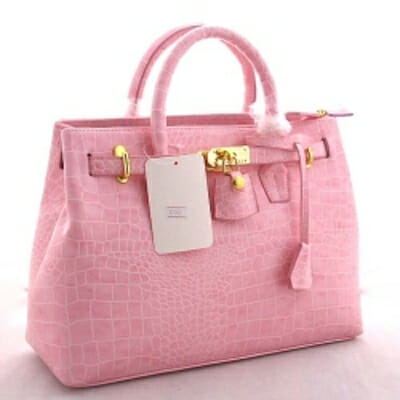The “Status Bag” Bubble Won’t Pop

Recently, the luxury fashion retail site Net-a-Porter sold out of a thousand $200 Karl Lagerfeld Barbie dolls in a single day. Founded in 2000, the site has since expanded to an accompanying magazine, a less expensive (but-still expensive) kid sister site called The Outnet, and now has an estimated value that might make Richie Rich’s parents salivate. On holiday weekend mornings I’ve watched as Net-a-Porter has sold through swaths of bags, dresses, shoes, and coats—all valued at anywhere between, say, a grand or seven—well before noon.
The persistent cultural obsession with the luxury item, perhaps especially the purse, continues to amaze. In today’s economy, the surest way to prove how unphased you are by our collective post-recession world is to wear a signifier of your wealth on your arm (appropriately, the signifier that you also use to carry your wealth). Even now, Elle, a magazine for working women, will still run a piece about the merits of spending thousands for that “status bag”—or even several of them. And the purveyors of these goods certainly aren’t suffering. Forbes recently thought to celebrate the CEO of the luxury house, Hérmes, whose family-held company’s assets outweigh “the Rockefellers, the Mellons and the Fords. Combined.”
The reasons that the institution of the status bag persists are self-evident. In defiance of the economy’s recent ups and downs, the luxury market has enjoyed continued success, and its items continue to influence our tastes. Meanwhile, lower-level brands now compete by offering less expensive, but still quite expensive, alternatives to the famous bags. Though trends seem to suggest a hint of remove—sometimes olfactory in nature—from fancier bags, the social pressure to wear the best remains.
In early September, Professor Serdari, who studies luxury economics at NYU’s Business School, explained that the high-end customer base for luxury has expanded beyond the European and American markets that held sway three and four decades ago, toward growth in Russia, Asia, and Latin America. As ostensibly middle class shoppers from, say, China, visit the states or London, influenced by global fashion and advertising trends (Vogue China was launched in 2005, for instance), they might bring with them some $20,000 in cash to spend on goods each year. Of that shopping budget, purses might eat up a sizeable portion. Radha Chadha and Paul Husband, authors of The Cult of the Luxury Brand, cite the “logo-fication” of brands like Louis Vuitton as the largest factor in instigating the luxury craze in Asia, an arena that takes up roughly half the that worldwide market.
Serdari suggests that it is actually the increasing popularity of lower- and mid-level bags that now drives up the cost of higher-level bags. And there’s still a market for them, even at a 150 percent mark-up. Serdari says that, just as existing brands are hiking up their costs to distinguish themselves from the rest, a newly reinvented fashion brand (like Céline) might today choose to produce bags with the most marked increase (at, say, $2,500—up from $1,000 ten years ago).
Now, in a market overrun by bags of every shape and color, a shopper will find the price range completely transformed, while the status that the bag imbues remains the same. Even the small-batch shops have followed suit with their own cost inflation, selling items like a relatively plain clutch from a high-end young brand with a rectangular patch of fur I recently saw going for eighteen hundred dollars. One friend looked at it dubiously and asked if the fur was even real.
For the highest-spending consumer, one study in the Journal of Marking suggests, the status-bag desire is driven not by the brand on the bag’s label, but by the quality of its stitching, materials, and craftsmanship. The educated Birkin buyer enjoys knowing that its skin comes directly from the Hérmes crocodile farm. Yet for most consumers, the brand-status of the bag itself, rather than an evaluation of its objective quality, still holds sway.
Besides quality, there’s also quantity to consider. Since no one walks around all day with a $1800 fur clutch, she must own many bags for many occasions. In her 2013 book The Power of Glamour: Longing and the Art of Visual Persuasion, social critic Virginia Postrel describes the deep longing that “fantasy objects”—and not only one, but many of them at once—can engender in us. Excess promises material safety, it seems to me. There is an obvious longing for the very sense of luxury in our age of uncertainty. “You need only compare the closets in today’s new mid-market houses with those in even expensive houses built in the 1960s or ‘70s to see the difference,” Postrel wrote in an email. Modern home-shoppers simply must have an excess of space to house all of the things that we simply must have.
In August, a friend and I visited a large sale in downtown Manhattan where I thought I might encounter a purse I had wanted for some time. It had a defined color block pattern, leather, and a fine clasp (price available in-store only). If I wore it, I supposed, any occasion would be filled with purpose. My friend thought the entire thing ridiculous. Finding only a few Vera Wang wedding dresses, we left. Then we happened on The Container Store, the place Postrel calls the height of glamor for the organizing perfection it promises in the age of excess.
We both stood, fantasizing about all the things we could put in those colorful clear plastic boxes, and Postrel suddenly seemed absolutely right. Those clear containers, waiting to be filled, were material desire incarnate. But I shook it off. Fuck all, I thought, if I wouldn’t rather fly to Tokyo to take a whirl on the Shinkansen for the cost of that bag.